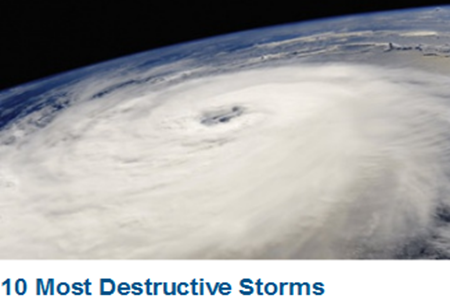
With the incredible forces they wield, storms are capable of changing thousands of lives in minutes. How can we compare the destructiveness of such awe-inspiring engines of nature? Do we tally the lives they claim? Weigh their lasting impacts on the cities and towns they raze? Assess their financial toll? All are valid criteria, but none alone is sufficient to encompass the scale and severity of truly titanic typhoons; that requires a holistic approach, one that takes into account the wide array of tangible and intangible harms wrought by their havoc.
Hurricane Camille, one of the few hurricanes to hit U.S. shores at Category 5 strength, pummelled
the Mississippi coastline in August of 1969. See more pictures of storms. Photo: John Loengard/
Time & Life Publications/Getty Images.
Before we delve into the big 10, let's familiarize ourselves with a few naming conventions.
All circling weather patterns with low-pressure centres, whether they rotate clockwise or counter clockwise, are technically cyclones, a group that includes hurricanes and tornadoes, as well as huge systems like middle-latitude (or midlatitude) cyclones.
"Hurricane" and "typhoon" are two names for the same thing - a strong tropical cyclone. They take on different names according to where they occur. The term "hurricane" refers to a tropical cyclone north of the equator in the Western Hemisphere; tropical cyclones north of the equator in the Eastern Hemisphere are called typhoons. In the Indian Ocean or the South Pacific, you would call such storms cyclones.
Since we're interested in the intensity and destructive power of storms, we also need to know how scientists classify them.
The Enhanced Fujita (EF) Scale measures tornado intensity on a 0-5 scale by estimating wind speeds based on damage. Interestingly, this means very powerful tornadoes can receive low EF ratings if they fail to run across anything significantly strong to destroy.
The Saffir-Simpson Hurricane Wind Scale places hurricanes into one of five categories according to their sustained wind speeds at a given time. It also offers estimates of the damage typically associated with such storms. In general, each increase in Saffir-Simpson category translates into a fourfold jump in destructive capacity.
In both scales, the higher the number, the worse the storm.
In this article, we'll look at 10 storms that topped the charts in destruction and death toll. Just to keep this from becoming a cyclones-only club, we'll also look at record-setting examples of other kinds of storms along the way.
Read on to begin your journey into the heart of the storm.
10. Tri-State Tornado
The scene after the Tri-State Tornado (Source)
The U.S. central plains region - nicknamed Tornado Alley - suffers the highest frequency of tornadoes in the world [source: Tarbuck]. Many of these twisters leave death, injury and destruction in their wake, but one stands in a class by itself.
Sweeping out from southeastern Missouri on March 18, 1925, the Tri-State Tornado careened across the southern tip of Illinois before dissipating in lower Indiana. Remarkably, these three locales lie 219 miles (352 kilometres) apart, and the tornado travelled this distance in just three and a half hours [source: SEMP].
Typical tornadoes measure 500 to 2,000 feet (150 to 600 meters) wide and move at a speed of about 30 mph (45 kph). Generous estimates suggest they travel an average of 6 miles (10 kilometres) before petering out [source: Tarbuck]. The Tri-State Tornado achieved an average speed of 62 mph (100 kph) and topped out at 73 mph (117 kph). It covered more than 36 times as much ground as an average tornado. Some eyewitnesses reported its path as nearly a mile wide [source: NOAA].
Scientists today wonder if the Tri-State Tornado instead might have been a family of tornadoes spawned by a massive supercell storm, which would account for both its extremity and for the remarkably straight path it followed for 183 of its 219 miles [source: NOAA].
All told, the EF5 storm killed 695 people, 234 of whom lived in the town of Murphysboro, Ill., thereby setting the grim record for the most fatalities incurred by a tornado in a single U.S. city. In total, 2,027 people sustained injuries from the tornado's passage, and 15,000 homes were destroyed. Entire towns were obliterated [source: SEMP].
Myanmar's Deadly Cyclone
One of the world's more recent destructive storms was also one of its deadliest. On May 3, 2008, Cyclone Nargis struck the coastal communities of Myanmar (formerly Burma), pummelling the low-lying region with massive waves and catastrophic weather conditions. Casualty and missing-persons numbers changed hourly in the weeks following the disaster. A little more than a week after the storm, the Myanmar government reported 39,000 casualties and 28,000 missing people; in contrast, the Red Cross estimated up to 128,000 dead and 2.5 million in need of basic human necessities, such as food and water [source: Associated Press].
|
Next, let's look at a more recent storm that the world won't soon forget.
9. Daulatpur-Saturia, Bangladesh Tornado
The scene after the Daulatpur-Saturia Tornado (Source)
Often the severity of a natural disaster derives from the poverty, poor construction standards or population density of the area it strikes. As evidenced by both the 2010 Haiti earthquake and Hurricane Katrina in 2005, the poor are less healthy, less able to get out of the way of oncoming disasters, more likely to live in shelters that are vulnerable to natural forces and to lack the resources to deal with a disaster's aftermath.
On April 26, 1989, a tornado touched down in the Manikganj district of Bangladesh - one of the world's most densely populated countries. It swept eastward from the Daulatpur area into the severely drought-stricken areas of Saturia and Manikganj Sadar, cutting a swath 10 miles (16 kilometres) long and 1 mile (1.6 kilometres) wide. Although its duration and extent weren't especially large, the twister obliterated every structure within a radius of 2.5 square miles (6 square kilometres) [source: Encyclopaedia Britannica].
In the course of its brief rampage, the storm destroyed more than 20 villages, gusting residents, homes and livestock away. It also pummelled the landscape with rain and hail, threatening what few crops had survived the preceding drought [source: Associated Press]. When the scattered residents were accounted for, the tornado was found to have caused nearly 1,300 deaths, making it the deadliest tornado in recorded history [source: Encyclopaedia Britannica]. In the aftermath, central Bangladesh fell victim to widespread hunger and disease [source: Reuters].
In a grimly ironic twist, the tornado appeared just hours after then President Hussain Muhammad Ershad called upon the nation to pray for rain [source: Associated Press].
Tsunamis, Earthquakes and Volcanoes
This article focuses on weather-related disasters only. For example, the 2004 tsunami, which struck the coasts of many Southeast Asian countries, was triggered by an earthquake and thus doesn't qualify for our purposes.
|
8. Hurricane Katrina
An aerial shot taken on Sept. 11, 2005, of houses in the Chalmette neighbourhood in St. Bernard
Parish, near New Orleans. Photo: Jerry Grayson/Helifilms Australia PTY Ltd/Getty Images.
Although the death toll from this furious storm wasn't a record-breaker, Hurricane Katrina's financial impact was incomparable, and the storm forever changed New Orleans and the Gulf Coast region.
Trouble began brewing in the Atlantic in August 2005, when the storm formed in the vicinity of the Bahamas and swept across southern Florida. Upon returning to open waters, Katrina strengthened into a Category 5 hurricane - the highest Saffir-Simpson rating possible. In the 18 hours before landfall, it mellowed somewhat into a Category 3 storm.
A Category 5 hurricane produces sustained winds greater than 155 mph (249 kph), whereas a Category 3 pumps out winds at 111-130 mph (178-209 kph). Both are horrifying.
Katrina's size and reach were remarkable. Tropical-storm-force winds could be felt 161 nautical miles from the eye of the hurricane [source: Knabb].
For all of its remarkable winds, the aspect of a hurricane that frequently poses the greatest threat to life and property is its storm surge - the upwelling of water caused by shoreward-blowing hurricane winds. Katrina's storm surge towered almost 30 feet (9 meters) in some places, and its effects registered throughout the Gulf Coast region. The combination of extreme storm surges and time-weakened levees caused severe flooding in New Orleans and the surrounding communities. At one point, roughly 80 percent of New Orleans lay underwater - up to 20 feet (6 meters) deep in some places - and it would be 43 days before the last of the deluge would recede, its progress slowed by the arrival of Hurricane Rita a month later [source: Knabb].
In all, Katrina spawned 62 tornadoes across the Southeast and killed more than 1,800 people in numerous states [sources: Johnson; Louisiana Department of Health]. Louisiana suffered the greatest number of fatalities. There and in Mississippi, the storm surge annihilated entire coastal communities.
Due to the complex interplay of lost jobs, missed revenue opportunities and destroyed businesses, the final financial toll of Katrina is nearly incalculable, but estimates place the total financial impact at $200 billion [source: Galvin].
Read on to see what happens when a very different kind of precipitation gets out of control.
7. Iran Blizzard
This snowy scene at the resort of Shemshak, Iran, on Feb. 15, 2011, is very different from what faced
Iran during its infamous 1972 blizzard. Photo: Kaveh Kazemi/Getty Images.
In "Hamlet," shortly after Polonius' death, King Claudius remarks, "When sorrows come, they come not single spies/But in battalions." Terrible weather events too often illustrate this grim adage, piling one sorrow upon another; storms can lead to floods, which can lead to disease and pestilence, and so on.
After four years of drought, Iran must have been desperate for water in any form - any, that is, but the weeklong February 1972 blizzard in which it arrived. The storm dumped 10-26 feet (3-8 meters) of snow in outlying areas of northwestern, central and southern Iran, cutting off roads, cables and telephone lines, and trapping 4,000 villagers beneath its freezing blanket [sources: NOAA News; Raein]. Elsewhere, two massive avalanches buried an estimated 8,000 people.
Temperatures dropped to minus 13 F (minus 25 C) in some areas, freezing pipes and worsening the water shortage [sources: Raein]. In isolated, snowbound valleys, flu spread with a vengeance, and in some areas approached a 100 percent infection rate [sources: Raein].
Initial fatality estimates approached 6,000, but later revisions reduced the count to an estimated 4,000 [sources: NOAA News; Raein; St. Petersburg Times].
Tragic as the blizzard was, the death toll in the next disaster, which nearly washed an entire town out to sea, was higher still.
6. The Galveston Storm
The scene after the Galveston hurricane. Photo: FPG/Staff/Hulton
Archive/Getty Images.
On Sept. 8, 1900, Galveston, Texas, braved a storm of biblical proportions, the deadliest natural disaster ever to strike U.S. territory. The day before it struck, the island city, located just off the Texas coast in the Gulf of Mexico, was a place of 37,000 people and bright economic prospects; the next day, its population had dropped to 31,000, and the city had sustained millions of dollars in damage [source: The 1900 Storm].
A hurricane - estimated to be a Category 4 - slammed into the unprotected, low-lying island, bringing with it immense destruction. The consensus among researchers places Galveston death tolls at 8,000 to 10,000 people, with some estimates ranging as low as 6,000 or as high as 12,000. February of the following year saw remains still washing ashore.
The hurricane's 140 mph (225 kph) winds and 15-foot-high (4.5-meter-high) storm surge demolished 3,600 buildings [source: The 1900 Storm]. The whole island was submerged; by the time the waters receded, 12 city blocks - three-quarters of the city - had been washed away [source: Zarrella]. In the intervening hours, people struggled to stay alive, clinging to anything they could find above water.
As the citizens rebuilt their town, they tried to provide some protection against future sea-spawned disasters. The townspeople propped up buildings - in some cases as high as 17 feet (5 meters) above their original elevation - and raised the grade of the island. They also constructed a seawall 17 feet high and 10 miles (16 kilometres) long, which helped protect the city when another hurricane hit in 1961.
As horrifying as the Galveston storm and its aftermath were to the people of Texas, they were nothing compared to the devastation that struck Central America almost a century later.
5. Hurricane Mitch
The scene in Honduras after Hurricane Mitch (Source)
If we measure the costs of storms in lives, property and the difficulty of recovery, then Hurricane Mitch is, across the board, one of the worst hurricanes ever to strike land.
On Oct. 26, 1998, within a few short days of its Caribbean birth, Mitch slammed into the northeast coast of Honduras as a Category 5. Not long afterward, it weakened and stalled on the coast, where it transformed into a sprawling engine of rain production. During this time, the storm achieved peak winds of 180 mph (290 kph) and deluged much of Central America, causing flash floods, avalanches and mudslides that destroyed coastal regions, particularly in Honduras. After ramping up once again to tropical storm levels, it struck Florida on Nov. 5, then died out over the Atlantic [sources: Encyclopaedia Britannica; Rohter].
Mitch's floods, mudslides and winds wrecked crops and wiped out population centres throughout Honduras and areas of Nicaragua, Belize, El Salvador, Guatemala and Mexico. It demolished hundreds of thousands of homes, blew and washed away residents, and obliterated harvests. More than 11,000 people lost their lives, most of them in Honduras and Nicaragua, and thousands more went missing [source: Encyclopaedia Britannica].
In Honduras, Mitch left a country with no clear path to recovery. With infrastructure destroyed and unemployment on the rise following the destruction of vital plantations, one of the poorest and most debt-laden nations on Earth was faced with locating $1.7 billion to get it back on its feet [source: Morgan].
Now let's go a little further back in time, when another large cyclone wreaked havoc in the Caribbean, amid an international power struggle known to Americans as the Revolutionary War.
4. The Great Hurricane of 1780
The devastating death toll of the Great Hurricane of 1780 exceeds even that of Hurricane Mitch. An estimated 22,000 people perished between Oct. 10 and 16 in the eastern Caribbean, most of them in the Lesser Antilles, with the heaviest losses occurring on the islands of Martinique, St. Eustatius and Barbados [source: CDERA]. Beyond these casualties, it's estimated that thousands of French and British sailors perished when the intense weather ploughed into their vessels [source: CDERA].
Although its exact strength remains unknown, anecdotal evidence leads modern researchers to conclude that the Great Hurricane was a Category 5 storm with winds in excess of 200 mph (320 kph). Some eyewitness accounts attest to the complete ruins of sturdy stone buildings and forts, to heavy cannons sent hurtling hundreds of feet and to trees having their bark ripped away.
What Happens When Hurricanes and Cyclones Hit Land?
As hurricanes and cyclones build in strength, people focus on preparing coastal areas, and for good reason: 90 percent of hurricane- and cyclone-related fatalities occur when storm surge smashes into a coastline. Storm surge usually looms 6-10 feet (2-3 meters) above the high tide line [source: Tarbuck]. In extreme cases, the storm surge can be much higher: Hurricane Katrina's estimated storm surge towered 28 feet (8.5 meters) [source: Knabb]. Hurricanes and cyclones typically diminish in strength after they make landfall because they lose contact with their key source of power - large amounts of warm water. However, hurricanes that "stall" near water can also become huge rain producers and sources of flooding.
|
We've made it this far, and we're entering the top three. Continue to read about how chains of events can amplify the destructive power of storms.
3. The Vargas Tragedy
The scene after the Vargas storm (Source)
The rain-spawned tragedy that befell the Vargas coast in Venezuela in December 1999 demonstrates how too much rain can spawn a domino sequence of devastation, a gestalt of destruction greater than the sum of its parts. From Dec. 14-16, a storm poured a year's worth of rain down on the vertical slopes of the Sierra de Avila Mountains north of Caracas, triggering flooding and some of the most massive landslides and debris flows in world history [source: Wieczorek].
The subsequent devastation smashed more than 8,000 homes and 700 apartment buildings. It wrecked roads, telephone and power lines, and water and sewage systems, running up a total bill of around $1.79 billion [source: Wieczorek]. An estimated 30,000 people died, but only about 1,000 bodies were ever recovered; debris flows and floods buried many of the remainder or swept them out to sea [source: USAID].
When it comes to suffering destruction at the hands of severe weather events, some places are topographically and geographically worse off than others, as we'll see next.
2. Bhola Cyclone
After the Bhola Cyclone devastated croplands, clean-up efforts included attempting to salvage rice
and other grains in order to avoid starvation. Photo: Larry Burrows/Stringer/Time & Life
Pictures/Getty Images.
The year before Bangladesh would become an independent nation by seceding from Pakistan, it was struck by a raging cyclone that caused chaos on its low-lying coastal delta.
Cyclones striking Bangladesh tend to cause immense devastation because the country's topography conspires to amplify their impact. Thus, the 1970 storm, nicknamed the Bhola Cyclone, proved to be one of the worst natural disasters in recorded history, even though it made landfall as only a Category 3 storm. Fatality estimates range from 300,000 to 1 million people, although most put the tally at closer to 500,000.
Bangladesh's delta is one of the most fertile croplands on the globe, with several rivers pouring silt and nutrients into its soil. Because of this, the region ranks among the most densely populated in the world, despite the inherent topographical hazards of living there. The danger stems from two main factors. First, a good portion of the country barely rises above sea level. Second, its rivers (three major and several smaller ones) and the shape of its coastline combine to draw water far inland, increasing the likelihood and severity of flooding.
Storm surges strike areas like Bangladesh with particular lethality, and they cause most of the fatalities and a good portion of the property damage from storms like the Bhola Cyclone.
That just leaves one. Now, let's look at the mother of all destructive storms in recorded history.
1. Super Typhoon Nina
Typhoon Nina while undergoing explosive deepening on August 2, 1975 (Source).
From the dawn of civilization to today, floods have caused more human deaths and wreaked more extensive devastation than any natural force. The same rivers that offer life and the promise of sustainable sustenance can, in a season of floods, wipe out the people who depend on them.
In a work cataloguing deadly floods, China would rate its own chapter, if not its own book. The 1931 central China floods alone resulted in an estimated 4 million deaths and affected a quarter of China's population, making it one of the worst natural disasters in history and helping to earn the Hwang Ho, or "Yellow River," the nickname "China's Sorrow." In 1887, its floods killed 2 million people, and the 1931 and 1938 floods took the lives of almost 5 million [sources: Hudec; NOAA News]. However, these resulted from months or years of accumulating drought, rain and storms that combined to create conditions ripe for disaster, and thus didn't constitute a single storm; for similar havoc occurring as the result of a single weather event, we have to turn to 1975's Super Typhoon Nina.
Nina's unparalleled destructive power derived not from its winds but from the catastrophic flooding it triggered. Indeed, the typhoon had already spent most of its strength crossing Taiwan's central mountain range and had weakened to a tropical storm by the time it struck China [source: Weyman]. As it stalled over the mainland, Nina cranked out 42 inches (1,060 millimetres) of rain in 24 hours - a year's worth of central China's precipitation, delivered in a day. The deluge collapsed the Banqiao Dam and destroyed more than 60 other dams along with it [source: Xinhua].
As the dams buckled, a 6.2-mile-wide (10-kilometre-wide), 9.8-23-foot-high (3-7-meter-high) wave blasted across the lowlands at speeds approaching 31 mph (50 kph), destroying an area 34 miles (55 kilometres) long and 9.3 miles (15 kilometres) wide [source: CCTV]. The floods swept tens of thousands of survivors downstream and submerged thousands of square kilometres of land, killing 26,000 people. An additional 145,000 later died of disease and famine (some estimates place the death toll closer to 230,000) [sources: Goldstein; Xinhua].
In all, Nina collapsed almost 6 million buildings and affected 11 million people, running up an economic toll of $1.2 billion [source: Weyman]. In lives destroyed, and physical and economic impact, Nina truly towers among other typhoons as our most destructive storm.
These 10 storms were major natural disasters that afflicted huge numbers of people. To learn more about the ferocious storms nature throws our way, visit the links below.
Sources:
1. Associated Press. "Missing Put at 6,000 in Iranian Blizzard." The New York Times. Feb. 10, 1972. (Nov. 16, 2011)
2. Associated Press. "Red Cross: Up to 128,000 may have died in Myanmar." The Huffington Post. May 14, 2008. (May 15, 2008)
3. Associated Press. "Tornado in Bangladesh Kills 600." The New York Times. April 28, 1989. (Nov. 15, 2011)
4. Australian Bureau of Meteorology. "A Global Climatology." Global Guide to Tropical Cyclone Forecasting: Chapter 1: Global Overview. 2009. (Nov. 16, 2011)
5. Cascades Volcano Observatory. "Debris Flows, Mudflows, Jökulhlaups and Lahars." Feb. 22, 2005. (Nov. 14, 2011)
6. China Central Television. "Remembrance of August 1975 Flood." March 30, 2006. (Nov. 18, 2011)
7. CIA World Factbook. "Bangladesh." April 15, 2008.
8. CNN Interactive Special. "Hurricanes." (April 28, 2008)
9. Davenport, Stephen. "Cyclones in Bangladesh." Meteogroup. May 14, 2007. (May 1, 2008)
10. EM-DAT Emergency Events Database. "Bangladesh." November 2007. (May 1, 2008)
11. Encyclopaedia Britannica. "Galveston." (April 30, 2008)
12. Encyclopaedia Britannica. "Hurricane Mitch." (Nov. 16, 2011)
13. Encyclopaedia Britannica. "Saturia–Manikganj Sadar Tornado." (Nov. 14, 2011)
14. Encyclopaedia Britannica. "Tropical Cyclone." (April 30, 2008)
15. Epic Disasters. "The World's Worst Disasters." (April 28, 2008)
16. Galvin, John. "Hurricane Katrina: New Orleans, August 2005." Popular Mechanics. July 31, 2007. (April 30, 2008)
17. Galvin, John. "Tri-State Tornado: Missouri, Illinois, Indiana, March 1925." Popular Mechanics. July 31, 2007. (April 28, 2008)
18. Galveston County Daily News. "The 1900 Storm." (April 30, 2008)
19. Goldstein, Lorrie. "'Safe' Power an Oxymoron." Toronto Sun. March 20, 2011. (Nov. 14, 2011)
20. Hudec, Kate. "Dealing with the Deluge." NOVA. March 26, 1996. (Nov. 17, 2011)
21. Iyer, Pico. "Disasters Trail of Tears and Anguish." Time Magazine. June 10, 1985. (April 30, 2008)
22. Johnson, David L. "Service Assessment: Hurricane Katrina - August 23 - 31, 2005." National Oceanic and Atmospheric Administration/National Weather Service. June 2006. (Nov. 18, 2011)
23. Knabb, Richard et al. "Tropical Cyclone Report Hurricane Katrina 23-30 August 2005." National Oceanic and Atmospheric Administration's National Hurricane Center. Aug. 10, 2006. (April 30, 2008)
24. Landsea, Chris. "What is a Hurricane, Typhoon, or Tropical Cyclone?" NOAA Atlantic Oceanographic and Meteorological Laboratory FAQ. July 15, 2011. (Nov. 17, 2011)
25. Louisiana Department of Health and Hospitals. "Reports of Missing and Deceased: Aug. 2, 2006." (Nov. 18, 2011)
26. Morgan, Peter. "Honduras Fights Back After Mitch." BBC News. Feb. 11, 1999. (Nov. 16, 2011)
27. National Emergency Management Organization. "NEMO remembers the great hurricane of 1780." The Caribbean Disaster Emergency Response Agency. Oct. 7, 2005. (May 3, 2008)
28. National Climatic Data Center. "Mitch: The Deadliest Atlantic Hurricane Since 1780." National Oceanic and Atmospheric Administration. Aug. 29, 2006. (May 3, 2008)
29. National Oceanic and Atmospheric Administration. "NOAA's Top Global Weather, Water and Climate Events of the 20th Century." (April 30, 2008)
30. National Oceanic and Atmospheric Administration Satellite and Information Service. "Billion Dollar U.S. Weather/Climate Disasters." June 17, 2011. (Nov. 14, 2011)
31. National Climatic Data Center. "The Enhanced Fujita Tornado Scale." National Oceanic and Atmospheric Administration. March 21, 2008. (May 3, 2008)
32. National Climatic Data Center. "The Saffir/Simpson Hurricane Scale." National Oceanic and Atmospheric Administration. July 31, 2006. (May 3, 2008)
33. National Hurricane Center. "Glossary of NHC Terms." National Oceanic and Atmospheric Administration/National Weather Service. Oct. 11, 2011. (Nov. 18, 2011)
34. National Weather Service. "Remembering the March 18, 1925 Tri-State Tornado." National Oceanic and Atmospheric Administration. March 16, 2000. (April 30, 2008)
35. National Weather Service. "NOAA/NWS 1925 Tri-State Tornado Web Site--Startling Statistics." National Oceanic and Atmospheric Administration. (April 30, 2008)
36. National Weather Service's National Hurricane Center. "The Deadliest Atlantic Tropical Cyclones 1492-1996." National Oceanic and Atmospheric Administration. Feb. 7, 2005. (April 30, 2008)
37. Neeno, Timothy. "War Comes to the Islands: The American Revolutionary War in the Caribbean." Military History Online.com. Dec. 11, 2005. (May 3, 2008)
38. Raein, Parvis. "Thousands Missing in Iranian Blizzard." Associated Press (Schenectady Gazette). Feb. 11, 1972. (Nov. 17, 2011)
39. Robinson, Simon. "How Bangladesh Survived a Cyclone." Time Magazine. Nov. 19, 2007. (April 30, 2008)
40. Science Reference. "Great Hurricane of 1780." Science Daily. (May 3, 2008)
41. St. Petersburg Times. "6,000 Said Iran Storm Toll." Feb 11, 1972. (Nov. 17, 2011)
42. Storm Prediction Center at National Centers for Environmental Prediction. "Enhanced F Scale for Tornado Damage." NOAA/National Weather Service. (Nov. 15, 2011)
43. Suburban Emergency Management Program. "The Great 1925 Tri-State Tornado, The Worst in U.S. History." (May 7, 2008)
44. Tarbuck, Edward and Lutgens, Frederick. Earth Science Eleventh Edition. Pearson Prentice Hall. 2006. (April 30, 2008)
45. The Associated Programme on Flood Management. "Integrated Flood Management Case Study: Bangladesh: Flood Management." World Meteorological Organization. September 2003. (April 30, 2008)
46. The Tornado Project. "Description of the Top Ten U.S. Killer Tornadoes #1: The Tri-State Tornado." (April 30, 2008)
47. This Day in History. "April 29, 1991 Cyclone Kills 135,000 in Bangladesh." History.com. (May 1, 2008)
48. This Day in History. "October 10, 1780 Great Hurricane ravages West Indies." History.com. (May 1, 2008)
49. This Day in History. "November 13, 1970 East Pakistan devastated by cyclone." History.com. (May 1, 2008)
50. U.S. AID Office of Foreign Disaster Assistance. "Venezuela Factsheet." February 2000.
51. U.S. AID. "Bangladesh Cyclone." Bureau for Democracy, Conflict and Humanitarian Assistance in the Office of U.S. Foreign Disaster Assistance. March 31, 2008. (May 1, 2008)
52. Weyman, James C. and Linda J. Anderson-Berry. "Societal Impacts of Tropical Cyclones." Fifth International Workshop on Tropical Cyclones. December 2002. (Nov. 15, 2011)
53. Wieczorek, G.F., M.C. Larsen, L.S. Eaton, B.A. Morgan and J. L. Blair. "Debris-Flow and Flooding Hazards Associated With the December 1999 Storm in Coastal Venezuela and Strategies for Mitigation." U.S. Geological Survey Open File Report 01-01442001. (Nov. 18, 2011)
54. Zarrella, John et al. "Hurricane that wrecked Galveston was deadliest in U.S. history." CNN. Sept. 8, 2000. (April 28, 2008)
Related Articles:
More Great Links:
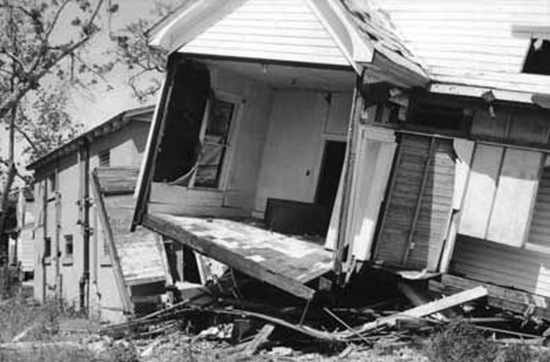
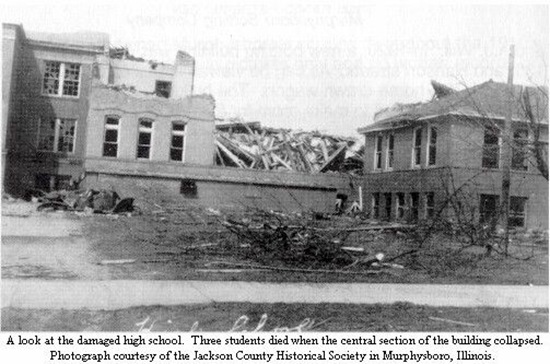
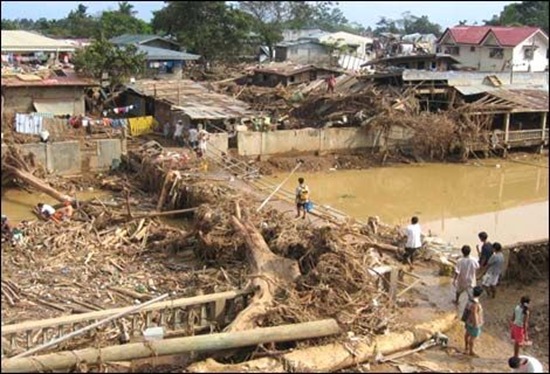

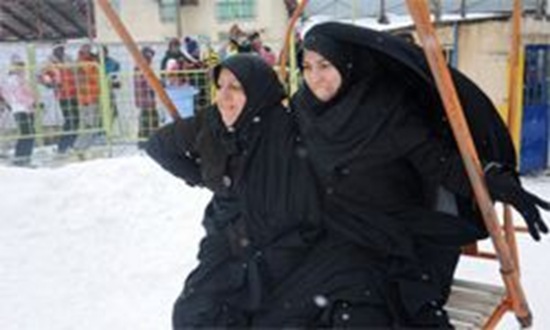

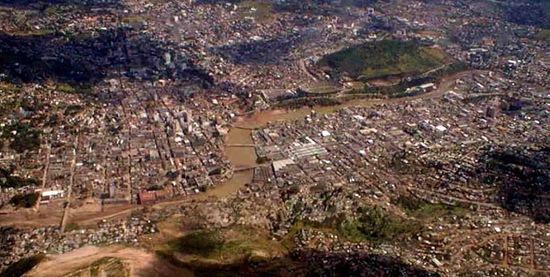



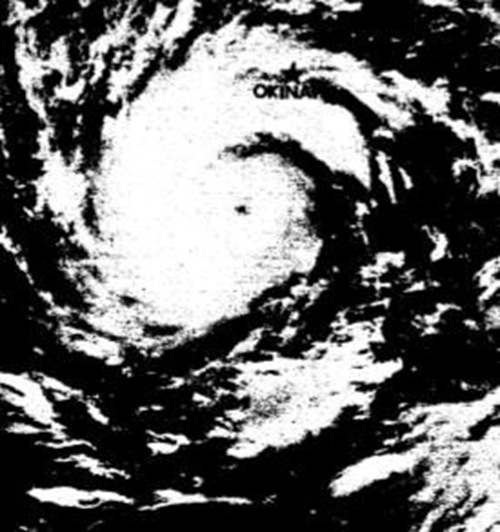
No comments:
Post a Comment
Please adhere to proper blog etiquette when posting your comments. This blog owner will exercise his absolution discretion in allowing or rejecting any comments that are deemed seditious, defamatory, libelous, racist, vulgar, insulting, and other remarks that exhibit similar characteristics. If you insist on using anonymous comments, please write your name or other IDs at the end of your message.